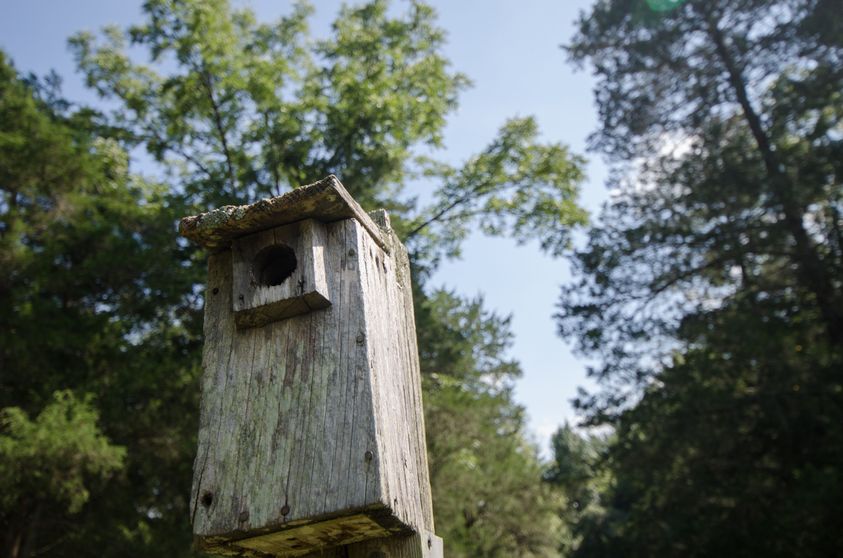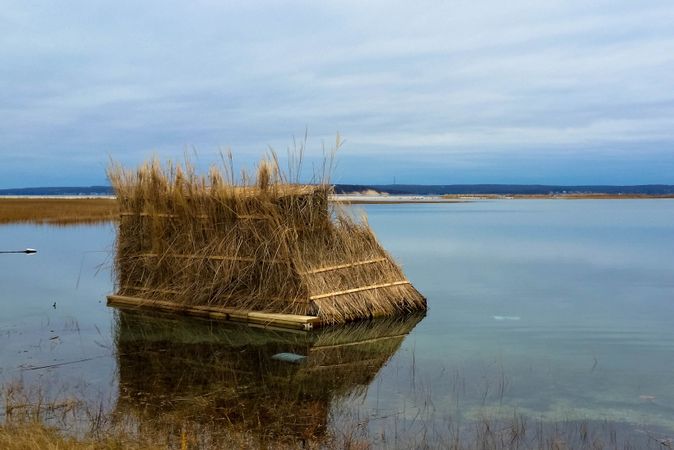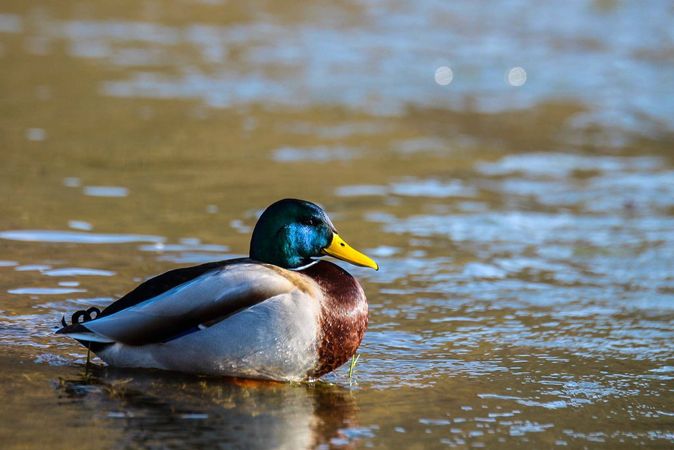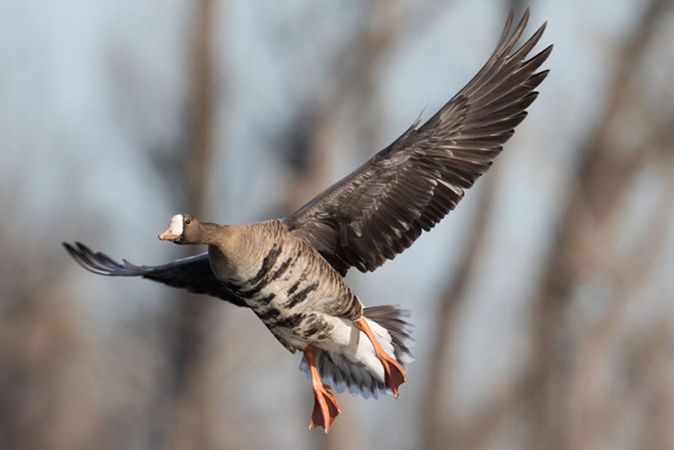It’s hard to believe that wood ducks were once on the verge of extinction. Due to deforestation and overharvesting, the squealing dabblers dwindled until the Migratory Bird Treaty Act of 1918 ushered in a speedy recovery. That population rebound was also aided by the advent of the wood duck box, a wooden nesting structure that gained popularity in the early 20th century. The artificial nests have since become a favorite conservation tool for landowners and hunters.
Hens typically nest in tree cavities near wetlands, but that can leave them and their eggs vulnerable to predators like racoons. Building a wood duck box, equipped with a barrier to prevent predation, offers a safe nesting space. Erecting multiple structures on your property can increase the local population, and proper wood duck box placement is important to ensure the birds find and use them during the spring nesting season.
Build a Box
Natural wood, such as cedar, which will resist rot, is the best building material. During the heat of summer, a wooden box will better insulate a hen and her eggs when compared to metal. The rough texture of unfinished lumber also helps chicks to climb out of the box when they’re ready to fly at eight to 10 weeks old. Audubon offers plans for a DIY wood duck box, but they’re also available for sale online.
Mount the structure on a pole, either treated wood or steel, ensuring the entrance to the box is six feet above the ground. While you can install a box to a tree, it’s harder to keep predators and other critters from getting in. Install a metal predator guard cone, three feet in diameter, on the pole or tree beneath the wood duck box. This will prevent snakes or raccoons from killing the hen and her chicks. While the device won’t stop every critter from getting in, over the years it’s been proven to be the most effective. Clear any nearby trees or branches that would allow mammals to gain access to the box.
Toss a four-inch layer of cedar wood shavings inside. It acts as nesting material to aid in incubation. The hen will cover the eggs while she’s out feeding and taking a break from laying.
FInd a Location
Erecting a box over open water is the best location and offers the highest chance of a hen building a nest. If you don’t have a pole to mount it on, an isolated tree, well away from dry land (and predators) will also work. Wood duck box placement over water ensures predation is lower and is safer for chicks when they fly down for the first time, saving them a potentially arduous trip on land.
A box mounted to a tree near the water’s edge can be a good nest location, but you’ll need to cut nearby branches and install a predator cone on the tree. Even boxes a few hundred yards into the woods away from water will still garner the attention of a hen seeking a nest.
Proper wood duck box placement is important so that hens find and utilize the structure during nesting season.
You can erect multiple boxes in close proximity, but be sure to keep them around 50 feet apart. This will simply decrease the chances of hens coming into conflict over nesting locations. When mounting the box, position the opening hole so that the hen can easily enter and exit as she zips through the timber.
Maintenance
You can easily tell that your boxes have been inhabited by a hen, evidenced by leftover feathers and egg fragments. Once a wood duck successfully nests, she’ll revisit the same spot each year. If the nest goes unused this spring, don’t fret. It can take up to two years for a wood duck to find and utilize a new box.
It’s important to keep the structures maintained throughout the year. As summer wanes and the nesting season is over, clear out any debris and add a new layer of cedar wood shavings. If a squirrel or another critter has set up shop inside, you’ll need to evict them before the next nesting season, which begins in March or April and can last until June.
Using wood duck boxes is a sensible wildlife management practice. It will increase the local duck population, whether you’re a hunter, birder or just want to play a role in conservation. For a simple, spring project, it doesn’t get much easier than this. Get a youngster to tag along for an education on hunter ethics and conservation.







